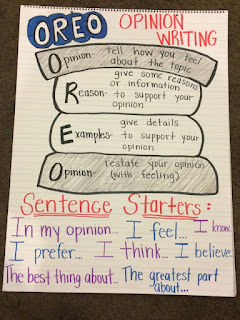Opinion Writing Anchor Chart
Opinion writing is an important skill that allows individuals to express their thoughts and beliefs on a specific topic. To effectively convey opinions, particularly in academic or persuasive writing, an opinion writing anchor chart can be a useful tool. This article explores the significance of an opinion writing anchor chart and provides insights into creating an effective one.
What is an Opinion Writing Anchor Chart?
An opinion writing anchor chart is a visual tool that serves as a reference guide, reminding writers of key elements and strategies to effectively communicate their opinions. It typically includes various components, such as:
- Introduction to opinion writing
- Main characteristics of opinion writing
- Examples of opinion words, phrases, and sentence starters
- Transition words and phrases for expressing different opinions
- Guidelines for providing supporting evidence or reasons
- Strategies for rebuttals and counterarguments
- Conclusion techniques in opinion writing
The Importance of an Opinion Writing Anchor Chart
An opinion writing anchor chart is a valuable resource for both beginner and experienced writers. It helps students and writers develop their ability to express opinions coherently, persuasively, and logically. By having a visual reference, writers can easily recall essential elements while crafting their arguments. This supports the development of critical thinking, organization, and persuasive skills.
Additionally, an opinion writing anchor chart encourages the use of diverse vocabulary and sentence structures. It prompts writers to expand their language repertoire, making their writing more engaging and compelling.
Creating an Effective Opinion Writing Anchor Chart
When creating an opinion writing anchor chart, consider the following steps:
- Introduce the Chart: Begin with a clear and concise title, such as "Opinion Writing Anchor Chart," followed by the purpose of the chart.
- Include Key Components: List the essential elements outlined above, using bullet points. Ensure each component is explained succinctly.
- Visual Presentation: Use a clean and organized layout to make the anchor chart visually appealing. Utilize different font sizes and colors to differentiate between sections.
- Provide Examples and Models: Incorporate relevant examples and models to demonstrate how to apply the strategies and techniques discussed in the anchor chart.
- Hang the Chart: Display the anchor chart in a prominent location in the classroom or writing area where it is easily visible and accessible for students.
- Revisit and Reinforce: Regularly refer to the anchor chart during writing activities and discussions to reinforce its content and encourage students to utilize its guidance.
An effective opinion writing anchor chart acts as a powerful tool to enhance students' opinion writing skills. It not only serves as a reminder of the necessary components but also guides writers in structuring and organizing their thoughts effectively.
By employing an opinion writing anchor chart, writers can develop strong arguments, persuade readers, and articulate their opinions with confidence and clarity.

No comments:
Post a Comment